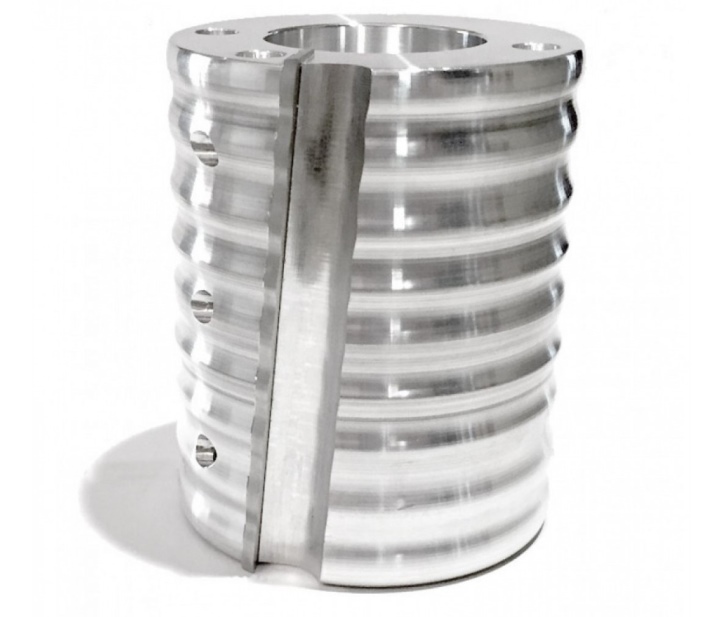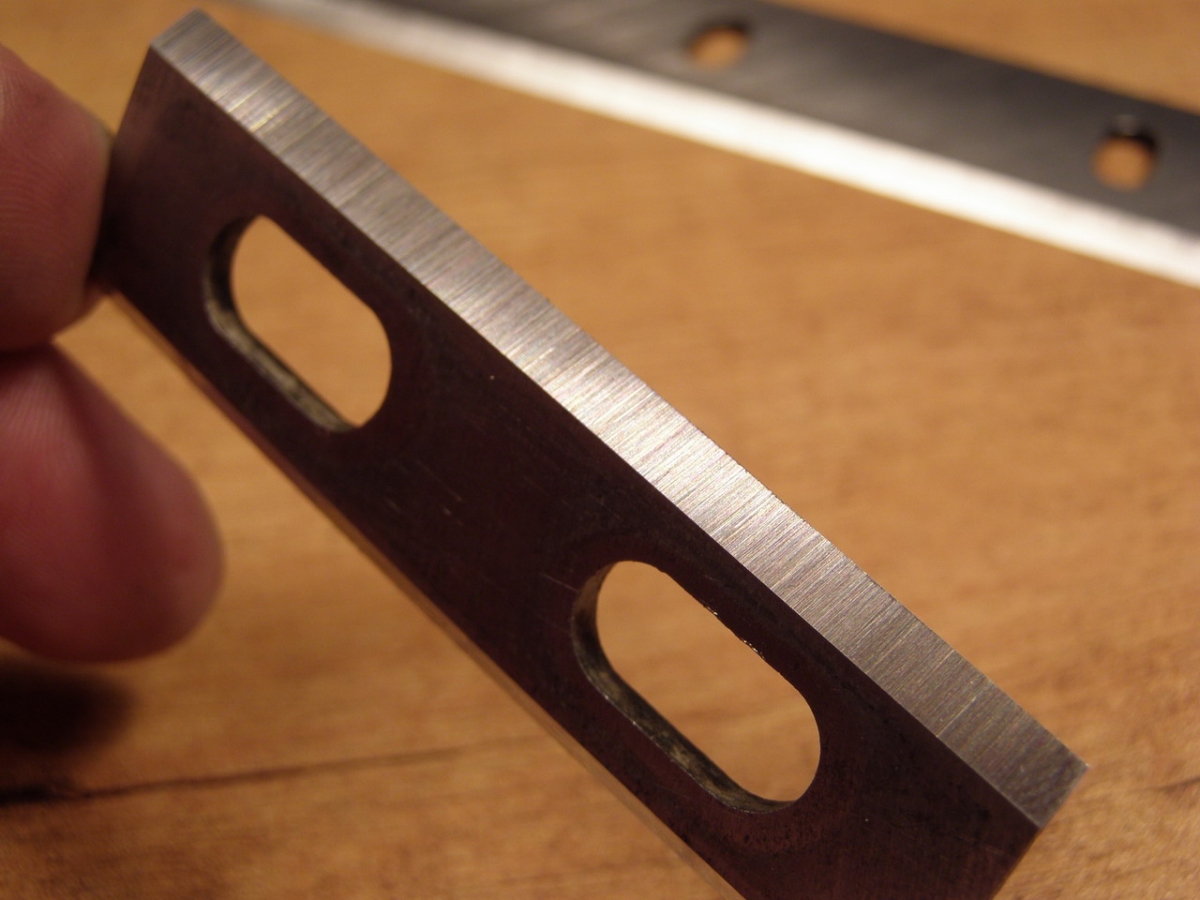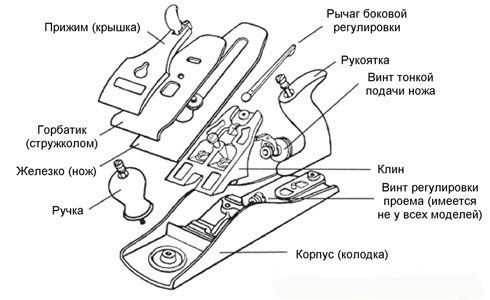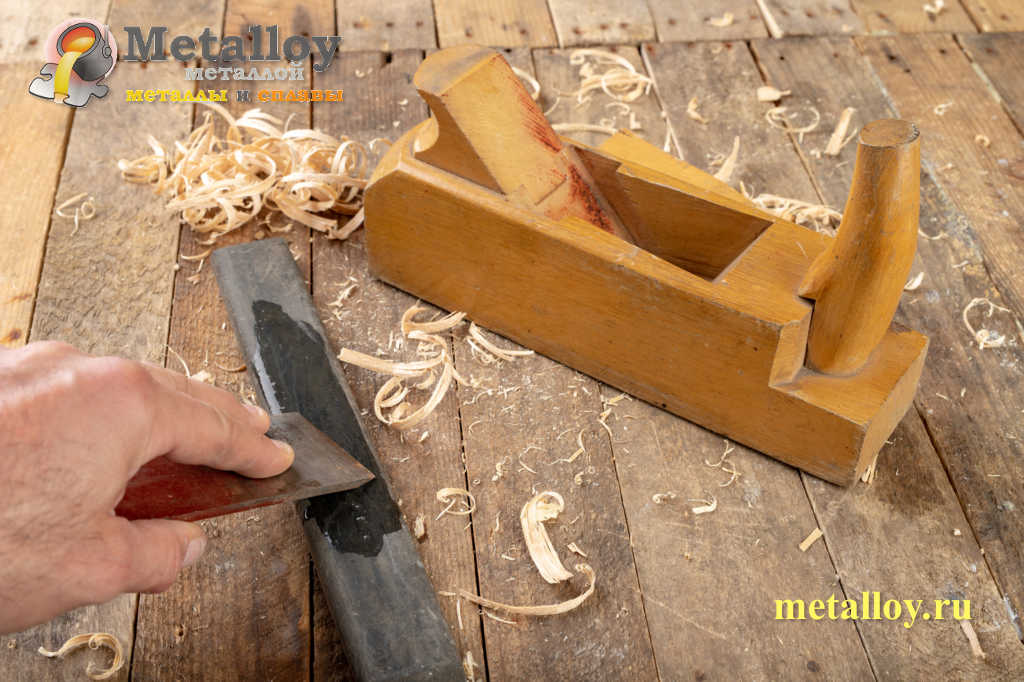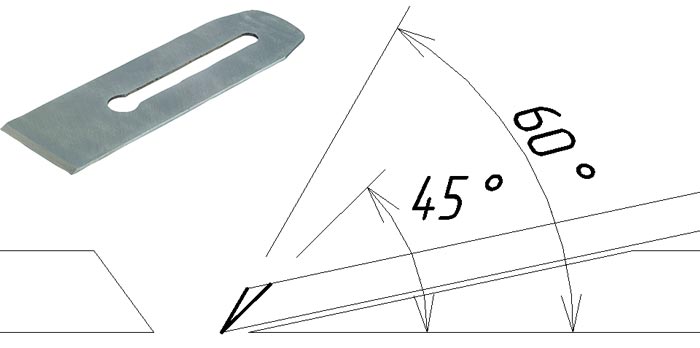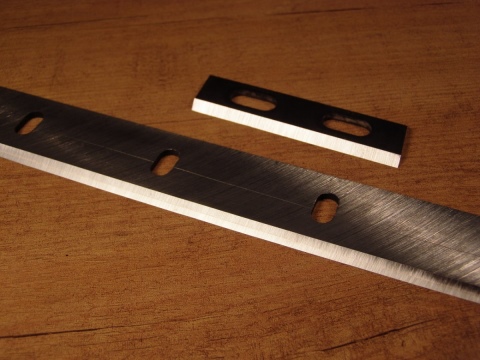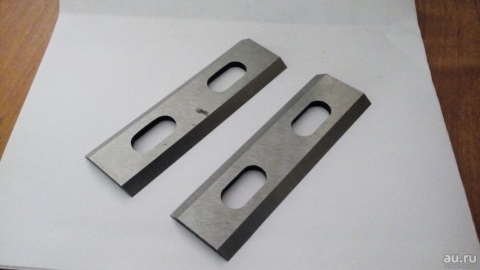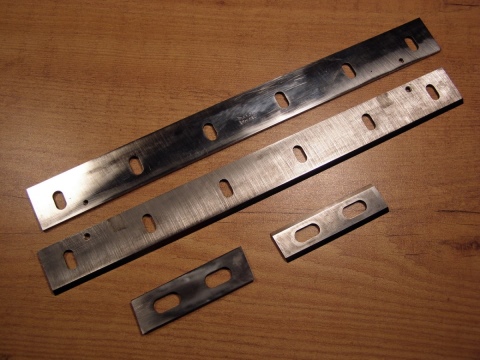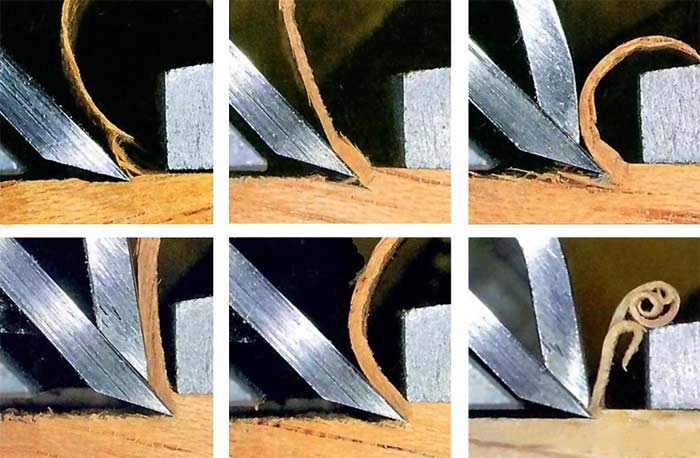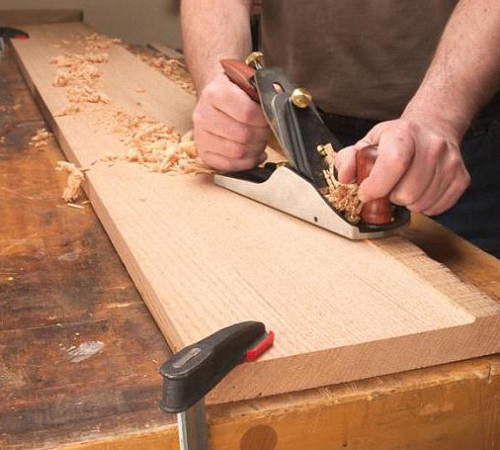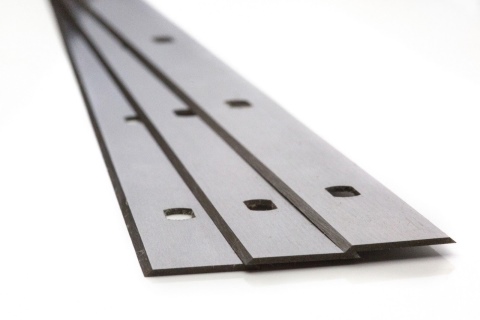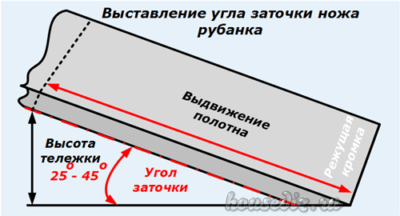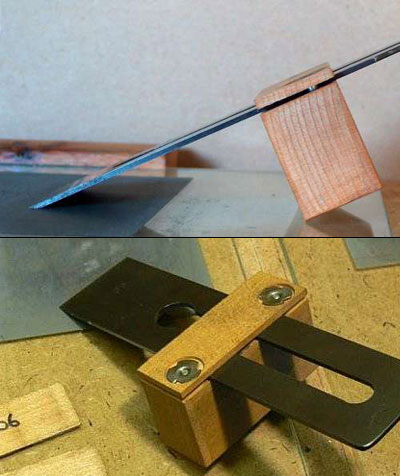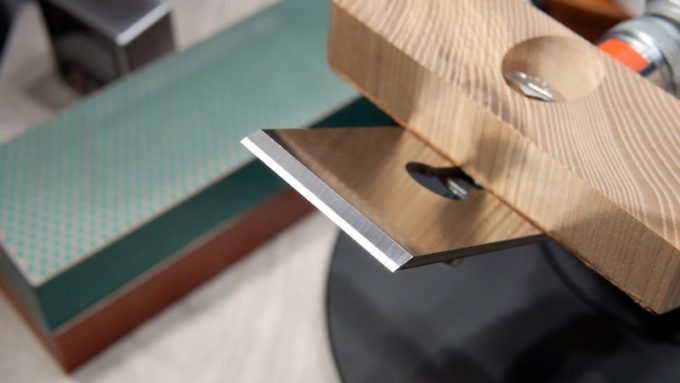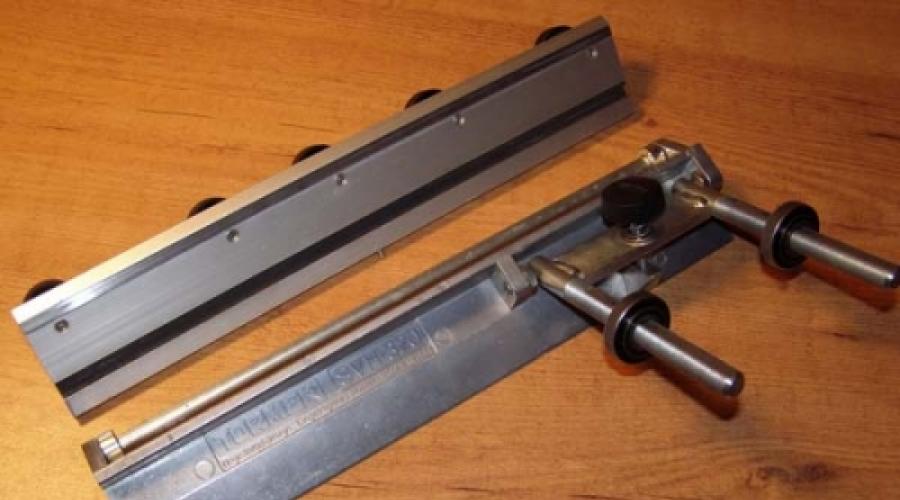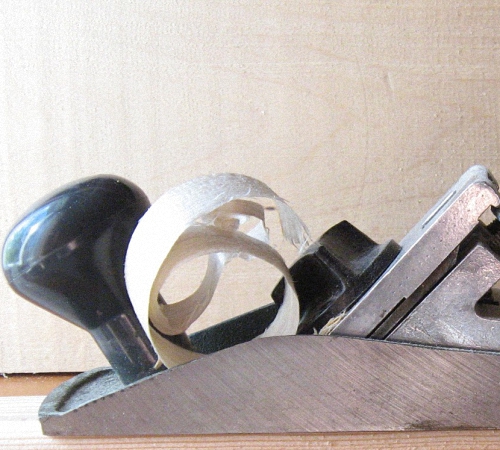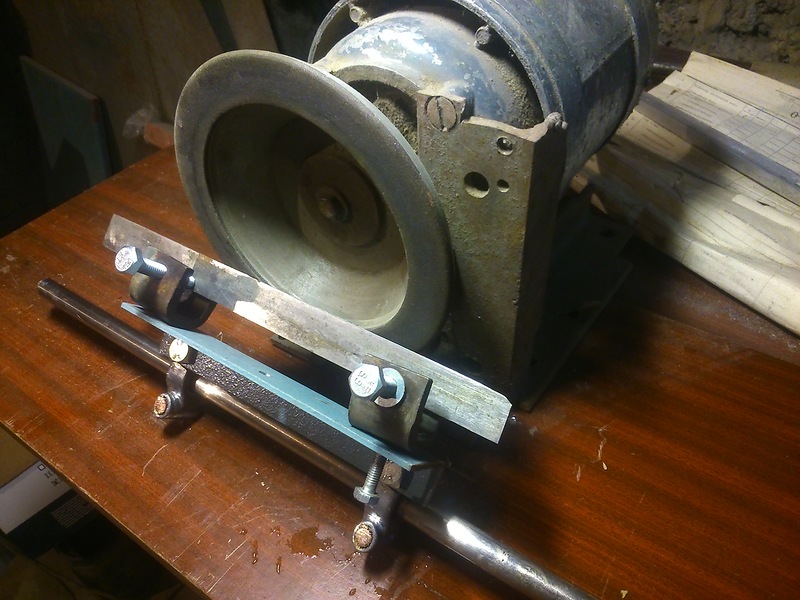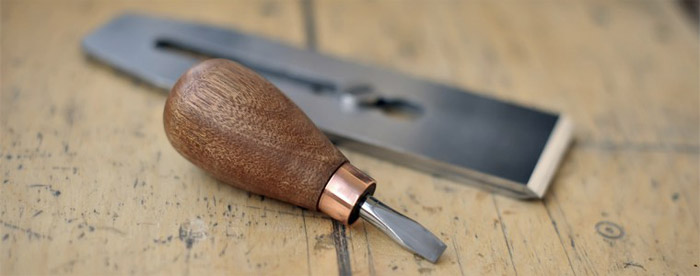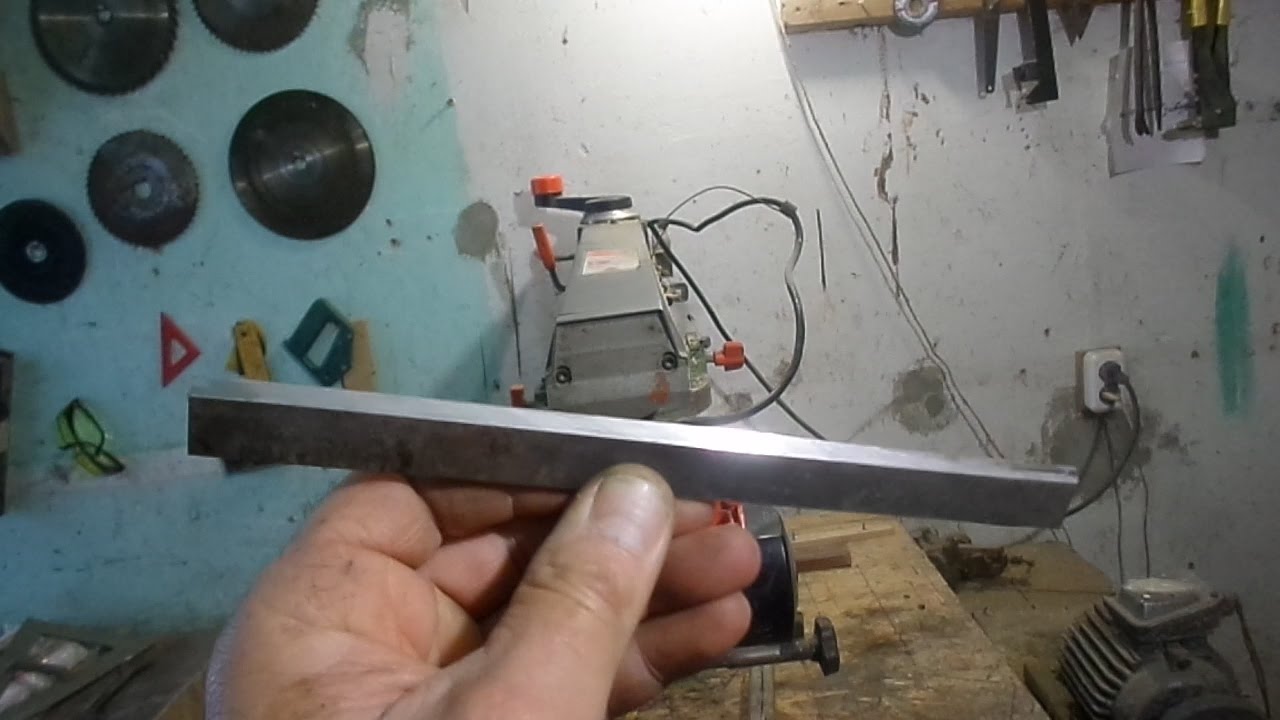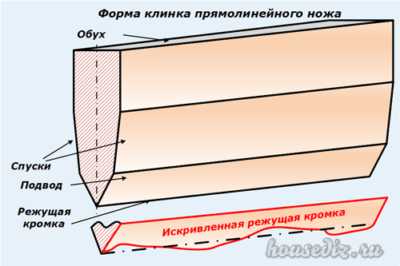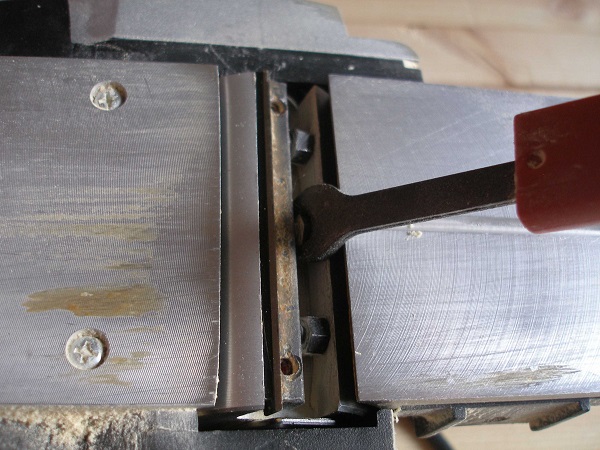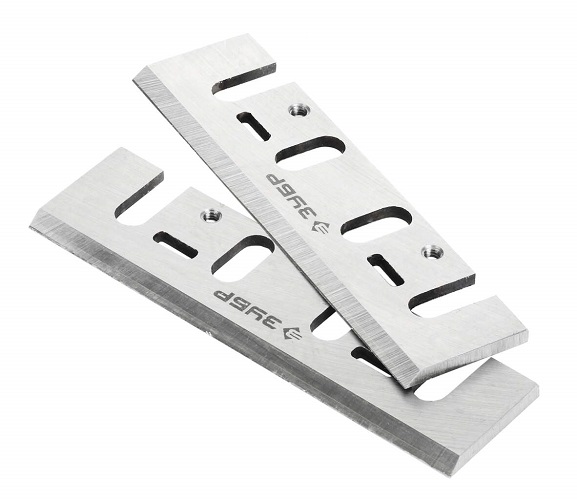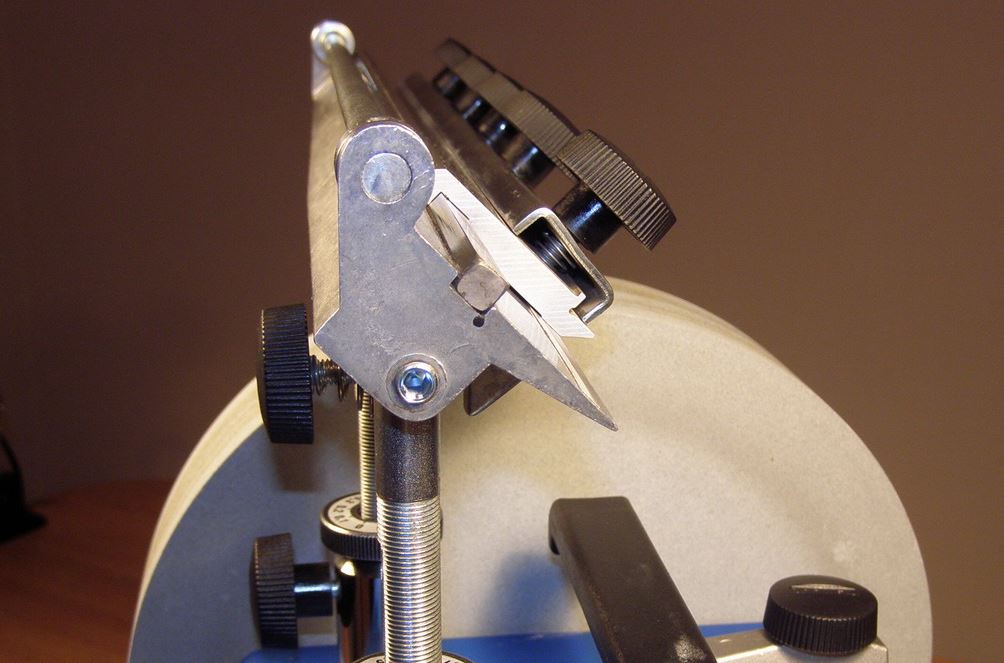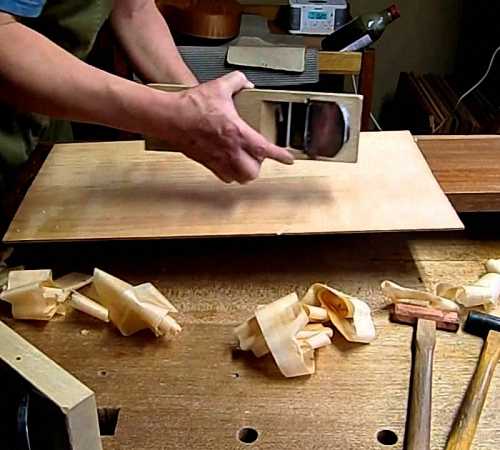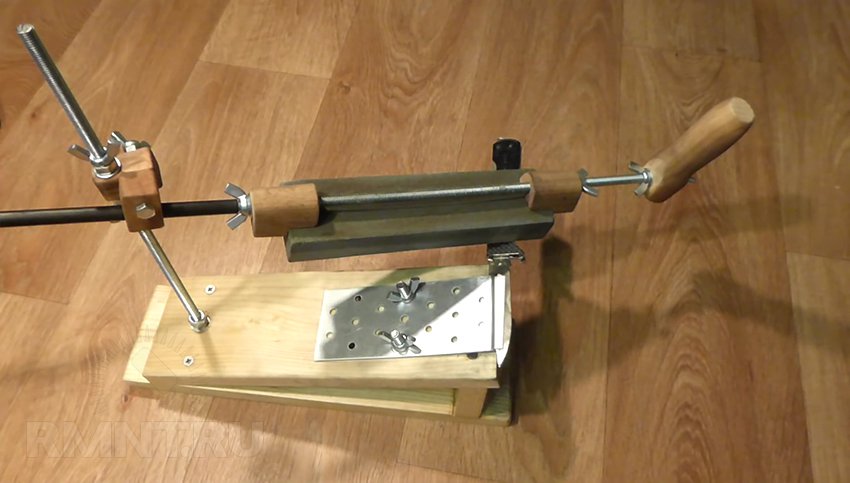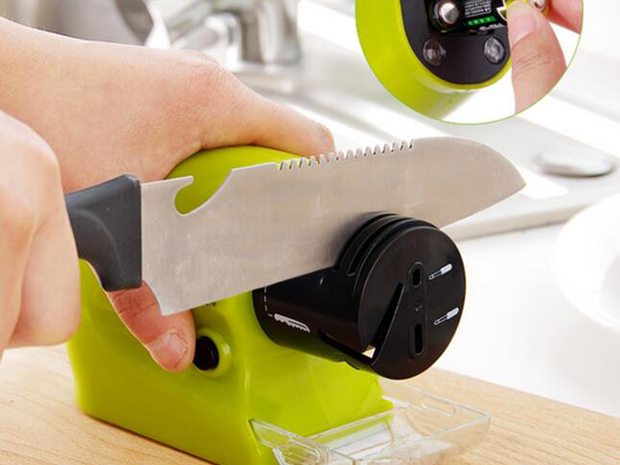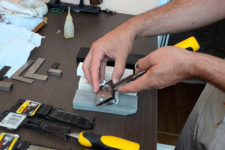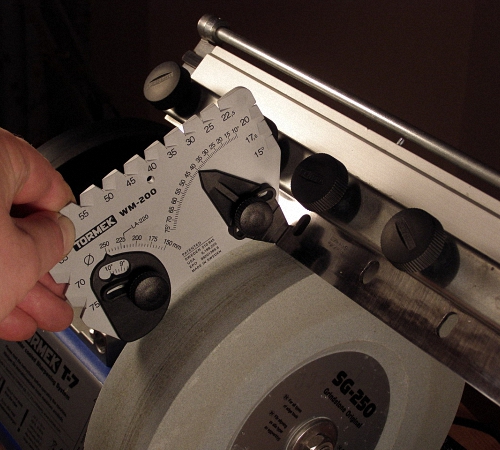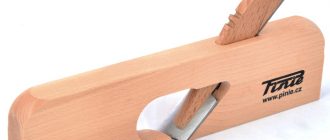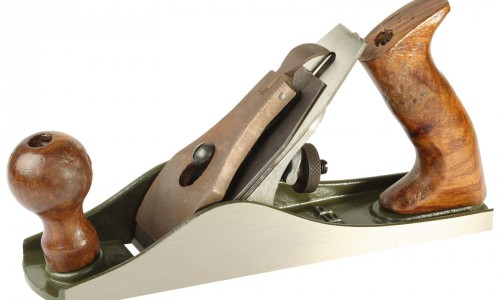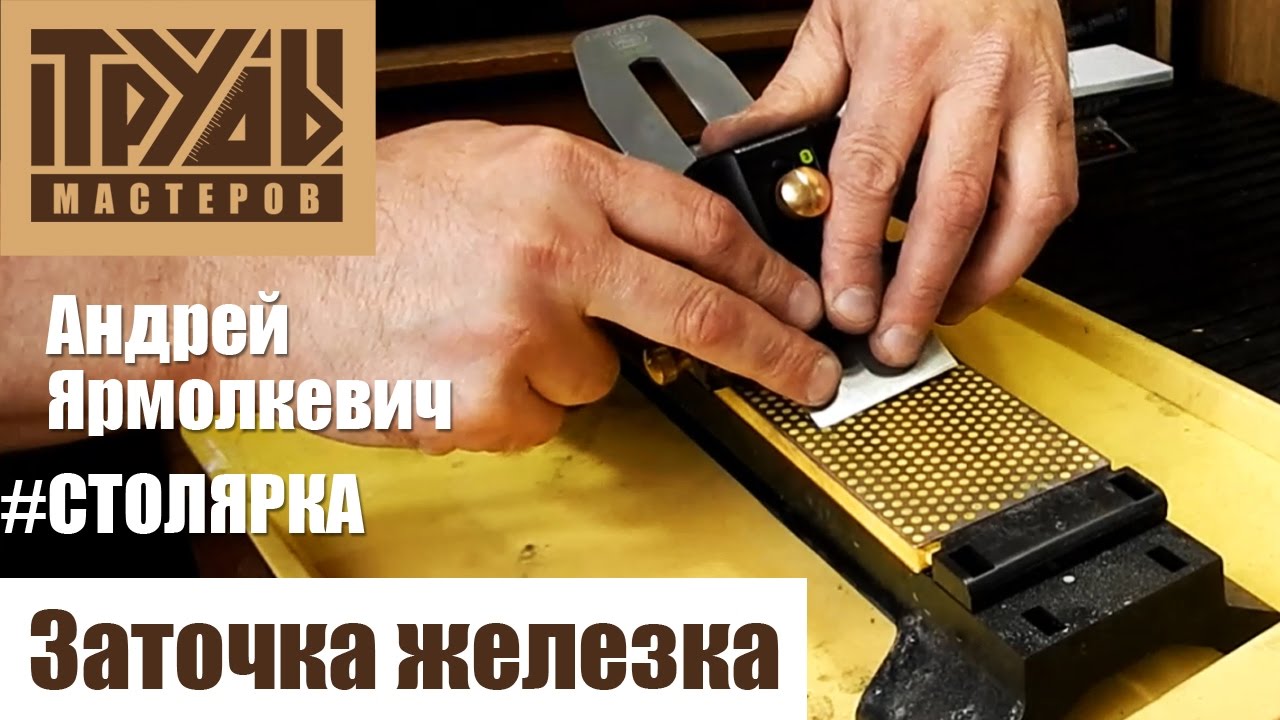Determining the need for sharpening
The relevance of this issue primarily concerns carpentry tools, because working with wood does not tolerate inaccuracies. If something is cut off too much or the cut is oblique and does not correspond to the specified parameters, then all the work will have to be redone.
Therefore, characteristics such as serviceability and quality are fundamental and require timely determination. This also applies to all types of planers, or rather, their knives, which must always be sharpened and ready for use.
To identify the need for sharpening, you need to pay attention to the following subtleties:
- The knife blade is in constant contact with different materials, which leads to their gradual dullness. It must be remembered that it is located at a certain angle, and its sharpness ensures the accuracy and correctness of the cut.
- In the electric planer, the knives are located directly on the rotating drum and have two cutting edges. When at least one of them becomes dull, the knife begins to turn over. Despite the fact that such knives are made of high strength steel (tungsten carbide), they also successfully become dull over time.
It is known that a different shape is an indicator inherent in all kinds of plane models. They can be straight, rounded and wavy. Some amateurs believe that straight knives are blunt most of all, but this is not true, this process can touch any structure, so it is necessary to monitor the condition.
People who, due to their professional duties, work almost constantly with wood processing, are more often faced with this phenomenon. Usually, changes are reflected in the quality and speed of the work performed and are accompanied by the following signs:
- difficulty in the movements produced;
- surfaces that have been working with for a long time do not change their shape;
- the appearance of a shiny threadlike strip on the chamfer (cutting edge).
Sharpening planer knives on the machine and adjusting them
Electric planer knives are consumable items.
In most cases, a special machine is used when sharpening a planer. It is quite easy to learn how to properly sharpen a tool on it - you just need to read the instructions. This equipment includes the Tormek machine (image 4). It is equipped with a powerful engine, has a low speed, and can sharpen the tool for a fairly long period of time. High cleanliness and precision sharpening ensures water cooling of the knife edge.
The sharpened knives are clamped by holders that are attached to the support. When the machine is in operation, it is possible to adjust the pressure, the width of the chamfer, the speed of rotation of the wheel. The machine can sharpen tools made of any metal. The very process of working on the machine is very simple, you just need to follow some safety rules.
A common type of hand planer is its electric version. His knives are consumables. There are usually 2 of them. They are mounted on a special drum and remove the top layer of wood from the workpiece. These products are made from a special grade of tool steel. They lend themselves well to sharpening. For some models, they are made of tungsten carbide, which is particularly durable.
The angle of the planer should be sharpened at an angle of 45 to 60 degrees.
Knives also differ in their shapes. They are:
- straight;
- rounded;
- curly.
Straight blades are used for narrow workpieces and quartering. Rounded blades are used to cut wide surfaces. The curvatures at the ends make the transitions between the planer pass lines neat. Wavy curly blades are used to simulate various aged surfaces. Before starting work with the plane, it is necessary to check the correct installation of the knives. To do this, turn the planer upside down and look at the blade: its cutting edge should protrude 0.3-0.5 mm above the sole.
Planers Interskol and Baikal are of very good quality in relation to other manufacturers.
Adjust the blades if necessary. For adjustment, the fastening screws are loosened, then the adjusting screws are turned in different directions until the knives take their place. After that, it remains to fix them. New electric planers usually come pre-adjusted from the factory. They can be used immediately. But the settings need to be checked periodically, because they can change at the moment the blade meets a knot or a nail. After adjustment, the plane is checked on an unnecessary bar or board.
Baikal and Interskol planes have very reliable and durable blades. They are slightly wider than the rest of the models, their thickness is also slightly larger. They are sharpened in the usual way. The sharpening angle is approximately 30 degrees. In order for the planing quality to be high, the cutting edge must be free of any burrs. To do this, sharpened knives must be trimmed using a grinding wheel. The piece of iron is installed in the device and moved from one side to the other. The pressure on the wheel or whetstone should be minimal so as not to overheat the part. Thanks to this manipulation, the knife will receive a special sharpness.
When fine-tuning with the use of various kinds of whetstones, water, oil, kerosene are used as a coolant. If the whetstone has a different structure on each side, then first use the coarse-grained side, then the fine-grained. The touchstone must be rinsed periodically so that it does not become greasy.
How to sharpen a planer knife
And so, both sides of the knife have developed their resource of sharpness, we proceed to sharpening. As a general rule, from the first movement to finishing dressing, the contact angle between the knife and the sharpening tool should remain unchanged. The movement of the emery should be across the cutting surface.
There are several ways:
Manual sharpening with non-adjustable lock
A special device for sharpening is used - a knife holder (jig). With a uniform force, we make circular movements along a whetstone or a whetstone, being careful to process the entire cutting edge.

You can use sandpaper spread out on a flat surface. This option is only suitable for short knives.
Such holders often come with an electric plane. A significant drawback is the inability to adjust the sharpening angle. Hard metal knives cannot be sharpened this way.
Manual sharpening with adjustable lock
This method is semi-professional. The processing quality is at the highest level, but small mechanization is not used. A stop with adjustable height acts as a device that fixes the angle. For convenience, it can be equipped with a roller.
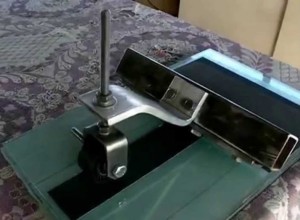
- By moving the knife longitudinally over the abrasive surface, you can achieve high quality processing.
- The pressure is regulated by the effort of the hand.
- Such a device allows you to sharpen knives of any width at home, it all depends on the area of the emery.
The main condition is a perfectly flat surface. It is convenient to use thick glass as a substrate.A waterproof sandpaper moistened with water is fixed on it. The process begins with a coarse fraction, gradually moving to "zero". The sharpening angle should be about 25-30 degrees, it is easy to control the height of the stop.
The disadvantage of this method is that it is time consuming. This is more than compensated for by the high quality of work. Sharpening carbide knives with this method is almost impossible.
Manual sharpening with emery jig
In this case, the knife is rigidly fixed, and the emery stone has the ability to move along the treated surface at a constant angle.
If you ensure that the direction of movement of the emery is perpendicular to the surface to be sharpened, the result will be of high quality. One of the variants is shown in the diagram.

The process is painstaking, but the manufacture of the device actually does not require financial costs. It should be noted that this option is not suitable for machining hard alloys.
Mechanized sharpening methods
Small grinding machines with an adjustable jig are used. They can be purchased at the store, but the cost of such items is high. Therefore, most home craftsmen prefer to make such machines on their own.

With the help of a guide located along the axis of rotation, the knife moves across the emery without changing the "angle of attack". Sharpening is of high quality, time costs are minimal. By changing circles, you can both sharpen and edit knives.

It is necessary to sharpen until the appearance of barely noticeable burrs, similar to foil. They are removed with a touchstone, which must be carried along the reverse side of the cut parallel to the knife.
The disadvantage of this method is the complexity of the design and the relatively high cost of components. At the same time, there are no restrictions, both in size and hardness of the cutters being machined.
The final stage is the straightening of the knife.
In this case, the surface is brought almost to a mirror finish. The sharpness of the edge is checked with paper. It should cut like a razor blade. Editing is done in the same way as sharpening.
You can correct the edge of the electric plane knife manually, see how to do this in this video.
Only the grit size of the abrasive should be practically zero. The ideal option is to use Japanese waterproof sandpaper at the final stage, with a grain of 2000-3000.
You can bring the surface to a mirror-like shine using a polishing paste and a felt wheel. But do not get carried away with the appearance, so as not to dull the edge.
Sharpening electric planer knives
The main features of the knives for drive-type planers are their two-sidedness, as well as work exclusively along the grain of the wood. If the knives are made of tool steel, they can be sharpened, while the carbide knives will have to be replaced. When one part of the knife is blunt, it is turned over to the opposite side and continues to be used.
There are the following versions of electric planer knives:
- Straight - they are used to work with narrow grooves of products;
- Rounded - suitable for planing wider surfaces;
- Curly or wavy, which are used to form textured surfaces on the product.
Knives also differ in their size, in particular, in length. For imported tools, the standard size is 82 mm, such knives are called "plates" in practice. However, some domestic manufacturers make knives compatible with foreign-made tools. Electric planers of increased power (designed for work with more durable wood) are equipped with thicker knives with a width of 110 mm. The peculiarity of such knives is the presence of mounting holes.
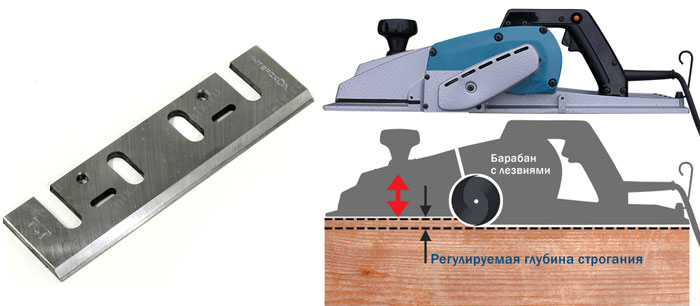
The longer the knife, the easier it is to sharpen.
As in the previous case, it is important to know the material from which the knife is made.The process of sharpening knives for electric planers is as follows
First, the current state of the cutting edge is determined. If a shiny strip is clearly visible on the chamfer of the knife, then such a tool needs to be sharpened. It is carried out at a sharpening angle of 30 °, using a grinding wheel with a guide jig, pre-moistened with water. Grinding can be done with both reciprocating and circular movements of the knife. In the first variant, the movements should be performed across the working surface of the blade. Cooling during grinding is imperative: the blades of electric planers operate at much higher speeds, and therefore are extremely sensitive to a decrease in hardness. This is exactly what happens if grinding is carried out in normal air: the steel is released, and its hardness drops.

It should be noted that all models of electric planers are equipped with special holders. Having fixed a knife in such a holder, it is relatively convenient to sharpen it on a regular grinding bar. In the process of sharpening, the condition of the blade surface is visually monitored: the working edge must have a mirror surface.
After finishing work, the surface of the grinding wheel or bar should be thoroughly cleaned of grease.
How to sharpen a plane knife
The first attempt to straighten the cutting edge showed good performance of the created device for sharpening carpentry tools, but immediately pointed out its shortcomings, which were admitted in a hurry.
Which complicates the work of the sharpening cart
About the height of the body
To create a high-quality cutting edge, you need to set the sharpening angle correctly. It is formed by extending a plane knife used as the hypotenuse of a right triangle.

This factor must be taken into account when creating the height of the cart. To form the sharpest corners, I needed to push the knife out of the sharpener as much as possible, and this is not very convenient.
Therefore, when setting up, I reduced the height of the device to a minimum, cutting off part of the body. It took just a few minutes, and the possibilities and usability of the tool expanded.
About the width of the distance between the wheels
Here, too, a mistake was made. A wide trolley requires a large grindstone or large area sandpaper. It is not economical.
I reduced the distance between the ball bearings as much as possible, and they began to fit on a homemade grindstone I made from ceramic tiles. With its help, it is convenient to carry out the finishing of the cutting edge after it has been straightened on coarse-grained skin.
Other recommendations
It is more convenient to make a body made of a bar from a bar from three component parts:
- the lower one, which serves as the axle for fastening the wheels and is attached to the upper adapter;
- medium rectangular;
- the top of the fixed mounting plate.
The lower workpiece with bearings can be made narrower than the width of the planer blade and fastened with separate screws to the middle one, and the studs can be placed in the middle and upper parts. This will make the cutting tool more comfortable.
Sharpening technology
There is nothing difficult in this matter if the planer knife is correctly installed. Its plane of the feeds must exactly lie on the surface of the grindstone at the moment when the cart is in working position
You need to pay attention to:
- density and uniformity of surfaces;
- strictly perpendicular position of the cutting edge relative to the direction of movement of the sharpening trolley;
- no obstacles in the way of the wheels.
Sharpening itself is fast. My assistant, an elementary school student, did this simple job with great interest, rolling the prepared device on an evenly spread strip of sandpaper.
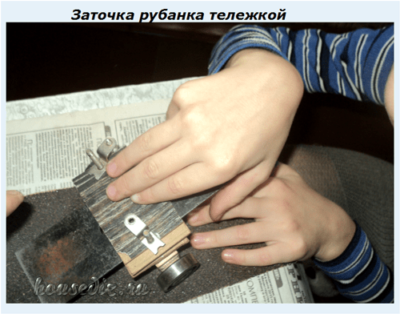
He got a fairly satisfactory result: a completely normal, even cutting edge, but not fully formed bevel plane at the bottom.

I have a little more work left to fix the indicated defect. Then he brought the cutting surface to good condition on a homemade grindstone with a fine grain.

The surface quality has improved. Next, you need to edit on leather or rubber with GOI paste.
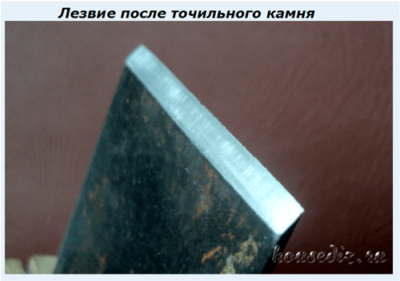
But even in this state, the plane began to plan wood well, creating thin and uniform chips.
Finishing the presentation of the material, I want to draw your attention to the fact that devices for sharpening planer knives, chisels and other carpentry tools have different designs. The simplest ones are created from an ordinary wooden block, in which an angle cut is made to attach the cutting blade.
This block is led over a grindstone. Sharpening is quite satisfactory, but there is additional friction of the wood, which, moreover, is gradually grinded. And in the described design, rolling bearings relieve this load.
The design I recommend is intended for beginners with no practical experience. Professional carpenters use expensive and high-precision tools.
Andrey Yarmolkevich tells about them in detail in his video "Sharpening the hand plane".
Useful goods
- Wood Carving Blades
- Tablet Opening Tool
- Laser level for 3 operating modes
How to make a device for sharpening and sharpen a planer knife or chisel with your own hands
If one corner of the gland protrudes, then it is corrected with a light blow of a hammer on the gland from the side of the protruding corner (Fig. 4c).
After the correct installation of the piece of iron, it is finally fixed with a wedge. The wedge should not be driven too hard to avoid splitting the shoulders.
Rice. 4 Setting up the planer: a - correct grip; b - reception of knocking out a knife (piece of iron); d - fixing the skew of the gland (front view)
Adjustment of metal plows is carried out using a clamping screw. After tuning, the instrument should be tested on a board. A well-tuned plane easily removes chips, planes smoothly, without scoring or scratches.
Carpentry. Mastery lessons. Content
Knife design
The hand plane knife consists of a working and a supporting part. In the configuration of the working part of the knife, there are:
- A chamfer that forms on the back of the blade. It provides a reduction in the force of cutting the knife into the wood due to the elimination of friction of the rear part against the workpiece material.
- Rake angle, which in most cases coincides with the accepted inclination of the knife in the planer body.
- The back corner of the chamfer itself.
- Working angle of sharpening, which is equal to the difference between the values of the chamfer angle and the angle of inclination of the knife in the plane.
For the durability of the tool under consideration, the rake angle is of greatest importance: it is it that determines the smoothness of the planed surface, the conditions for removing chips from the processing zone and the load on the blade.
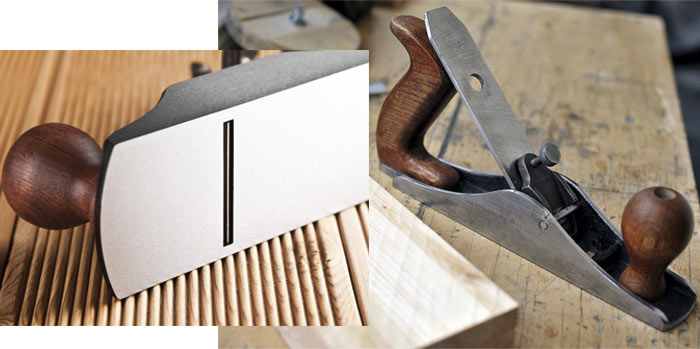
When choosing the optimal value for a given angle, the following factors are taken into account:
- Physical and mechanical properties of the processed material. In particular, as the hardness increases, the angle must be increased. For processing soft wood (linden, aspen, pine, larch), it is recommended to set the knife at an angle of 45 ± 5 °, for work on harder wood (hornbeam, oak, pear) - 60 ± 5 °, and when processing even harder materials - even up to 80 °. Such recommendations are associated with the abrasive action that produces the passage of chips when they rise from the planing zone;
- Planing type. Almost every type of wood requires a certain angle of inclination of the planer to the plane of the workpiece being processed. For example, a pine tree is best planed when the tool is tilted to a hand plane knife sharpening angle of 40 ... 50 ° from the board axis. Less soft grades are processed at a sharpening angle of 25 ... 30 °. This technique provides a better quality of planing, but at the same time the knife heats up more and, therefore, becomes dull faster;
- Knife material and hardness.High-speed steels P12 or even P18 are most suitable for these purposes (for this reason, some home craftsmen use parts of friction saw blades for making planer knives, which work in similar conditions). Planer knives made of ordinary U7 or U8 tool steel will be less durable.
Checking blade alignment
After sharpening, the knife must not be started immediately. It is required to check and adjust the position of the blade in the planer. When the blades have been processed and installed, it is necessary to carefully inspect the plane and estimate the distance that the knife moves out of its position. The optimal parameters are as follows.
- The blade protrusion should not exceed 0.5 mm. If a rough cut is required, then the cutting element can be extended by 1 mm.
- A large gap results in large chips. To improve the quality of work, you should reduce the gap between the surface of the wood and the blade. Then the chips will be minimal, and this will reduce metal wear.
Additionally, it should be borne in mind that when comparing a planer with other tools, it will differ from them in the possibility of using it for fine processing. This can only be achieved by correctly adjusting the location of the knives in the tool design and by choosing a suitable angle. When all the procedures for sharpening and adjusting the knives are completed, it is necessary to assess the performance of the planer. To do this, it is worth trying to process the surface of the wood. If it becomes smooth during processing, it means that the sharpening was done correctly.
The nuances of sharpening a hand planer knife in the video below.
Features of the work
Planer knives are sharpened at the most suitable angle under factory conditions, but when it becomes necessary to sharpen a tool that has lost its sharpness, it is required to preserve the existing sharpening features
If the work is carried out without the use of appropriate devices, then special attention will have to be paid to the correct position of the sharpened surface when exposed to an abrasive. But if there is a need to change the sharpening angle, special devices have to be used here.
Their description will be presented below, and it is no coincidence that they are intended for manual sharpening, since sharpeners powered by electricity do not allow achieving high results. High revolutions of the abrasive surface cause the processed blade after the next sharpening to become soft and dull in a shorter time. A number of specialists have not used an electric grinder for a long time when sharpening a tool with their own hands.
Species overview
Depending on the quality of the planer knives, the speed of the tool is determined, as well as the final result.
Also, the type of blade affects the way the surface is processed and the shape that can be obtained at the end of the work. Manufacturers of machine tools produce several types of planers, each of which differs mainly in the type of blade provided in the design.
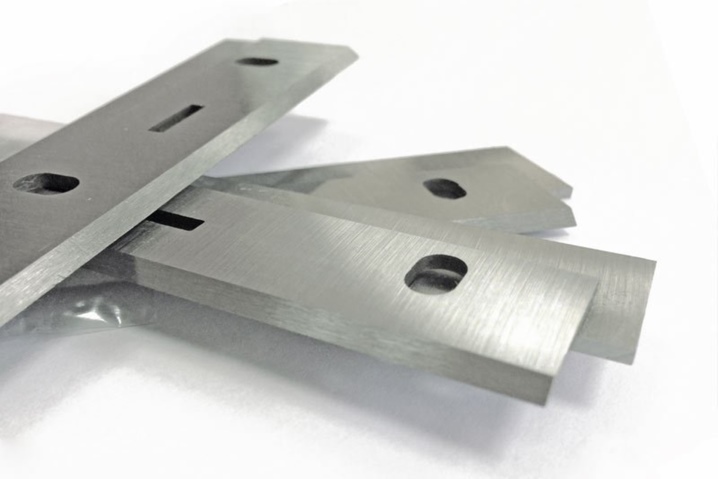
If we classify planers according to the method of surface treatment, then the following types of knives are distinguished.
Direct
With their help, it is possible to process small-sized workpieces. If you wish, you can choose a quarter to carry out the necessary work. The blades are classic straight and angled to create the desired result.
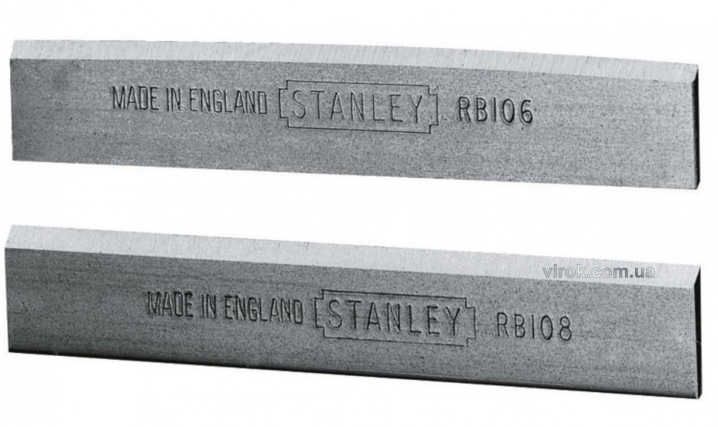
Rounded
They are in demand for the treatment of large-width surfaces. Such blades are used when it is necessary to organize a neat and smooth transition between the planing planes.
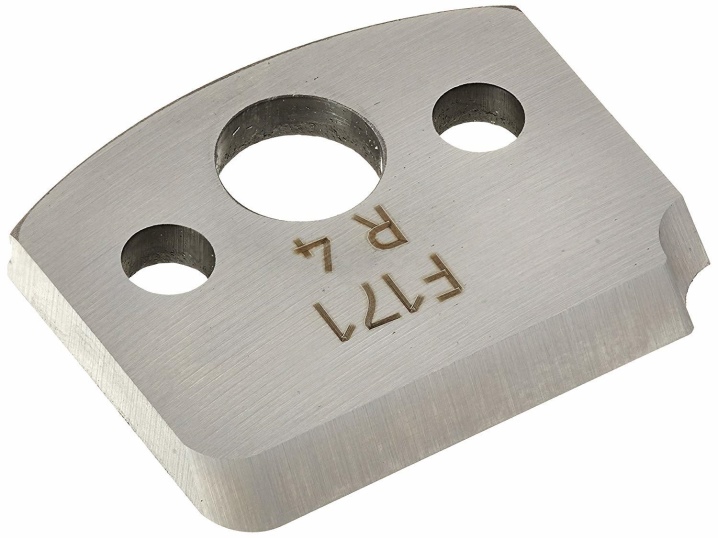
Curly
This category includes planers, knives of which allow you to achieve complex geometric shapes when processing a wooden surface. Structurally, the blades resemble the knives of classic planers, however, they have a number of features.By using curly knives, a wavy surface is created, an imitation of "aged" wood is performed. To determine a suitable knife, manufacturers use special markings that can be found on the surface. Thus, when buying a blade, you will be able to quickly select the appropriate option.
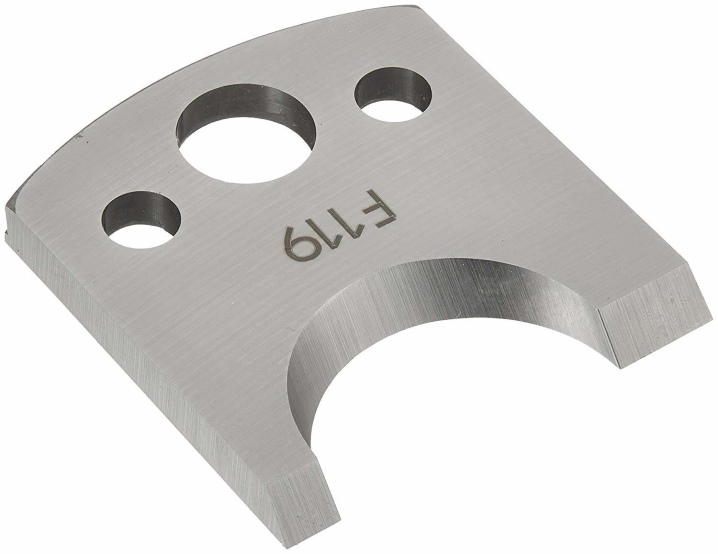
Spiral
Provide the most accurate cut. They are installed mainly in light models of planers, which are easy to operate. The advantage is the ability to adjust the planing depth. The knives built into the structure of woodworking equipment differ not only in the shape of the surface sharpening, but also in a number of other parameters.
